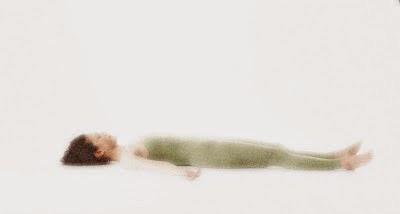 Of all the hundreds (or thousands?) of yoga poses, there is a single pose that has been called the best antidote to the stresses of western civilization. And anyone can do the pose, regardless of age, physical condition, or yoga experience, because all it requires is the ability to lie down and be still. This is Savasana (Corpse pose). And while Savasana is often taught as the last pose in yoga class, you can do it on its own, at any time you need. All that’s required is a firm surface to lie on and 10 to 20 minutes, and you’ve got a surprisingly effective anti-stress medicine that has absolutely no side effects and if you become addicted, well, that’s a good thing.Now you may be wondering, how can just lying down on your bedroom floor trigger the relaxation response? And how is this position that you take all the time in bed, on the grass under a blue sky, or on the warm sand of a beach qualify as a yoga pose?Savasana triggers the relaxation response (see here) because you bring your attention to your body and your mind while you lie on the floor instead of just daydreaming or spacing out. And it qualifies as a yoga pose, because to practice Savasana properly, you:
Of all the hundreds (or thousands?) of yoga poses, there is a single pose that has been called the best antidote to the stresses of western civilization. And anyone can do the pose, regardless of age, physical condition, or yoga experience, because all it requires is the ability to lie down and be still. This is Savasana (Corpse pose). And while Savasana is often taught as the last pose in yoga class, you can do it on its own, at any time you need. All that’s required is a firm surface to lie on and 10 to 20 minutes, and you’ve got a surprisingly effective anti-stress medicine that has absolutely no side effects and if you become addicted, well, that’s a good thing.Now you may be wondering, how can just lying down on your bedroom floor trigger the relaxation response? And how is this position that you take all the time in bed, on the grass under a blue sky, or on the warm sand of a beach qualify as a yoga pose?Savasana triggers the relaxation response (see here) because you bring your attention to your body and your mind while you lie on the floor instead of just daydreaming or spacing out. And it qualifies as a yoga pose, because to practice Savasana properly, you:- align your body
- remain still
- use a mental focus
- maintain your awareness as you come out of the pose

